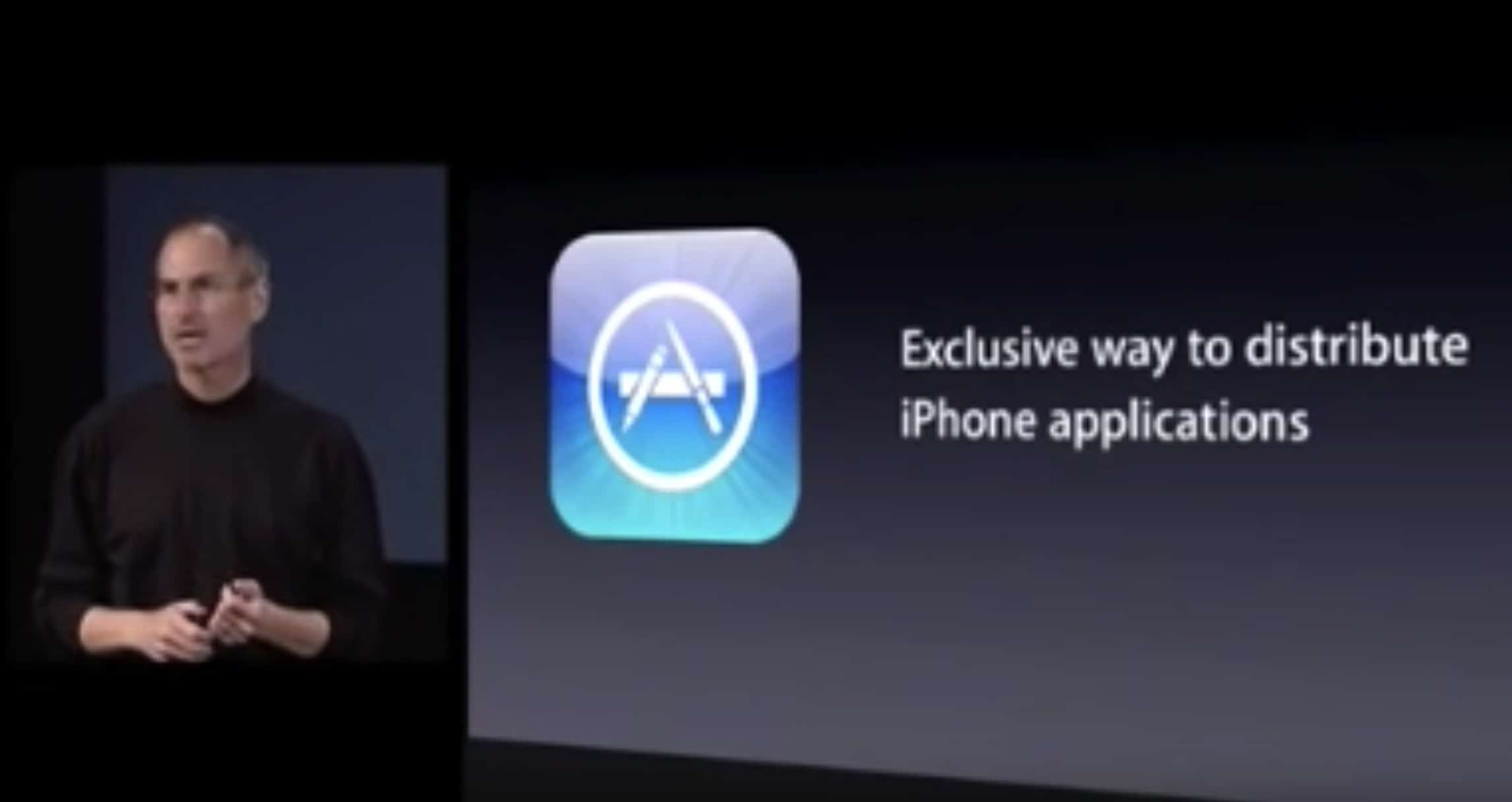 March 6, 2008: Apple releases the iPhone software development kit, finally allowing coders to start creating native mobile apps for the new smartphone. The iPhone SDK gives developers the tools they need to unlock the new smartphone’s potential.
March 6, 2008: Apple releases the iPhone software development kit, finally allowing coders to start creating native mobile apps for the new smartphone. The iPhone SDK gives developers the tools they need to unlock the new smartphone’s potential.
When the App Store eventually opens a few months later, a new industry springs up overnight. Third-party devs rush to take advantage of Apple’s lucrative distribution network.
Birth of the App Store
From the moment Apple unveiled the iPhone, developers prayed for an SDK. At first, debates raged inside Apple about whether a marketplace for third-party apps made sense. Some thought the move risked watering down Apple’s level of control, potentially allowing low-quality software on iPhones.
The main person against the App Store initiative? Apple co-founder and CEO Steve Jobs.
Others, such as Phil Schiller and Apple board member Art Levinson, lobbied Jobs to change his position and make the iPhone a generative platform rather than keeping it locked down.
Eventually, Jobs changed his mind. On March 6, 2008 — around nine months after the iPhone’s big reveal — Apple hosted an iPhone Software Roadmap event. Here the company announced the iPhone SDK, which became the basis of the iPhone Developer Program.
“We’re excited about creating a vibrant third-party developer community with potentially thousands of native applications for iPhone and iPod touch,” Jobs said in a press release.
You can watch him reveal the iPhone SDK in the video below:
Apple releases iPhone SDK, the key to building iPhone apps
iPhone apps had to be built on Macs running a new version of Apple’s integrated development environment, Xcode. Other Apple software allowed developers to design iPhone-friendly interfaces and monitor iPhone memory usage. A particularly useful tool called Simulator let them mimic the iPhone’s touch interactions on a Mac with a mouse or keyboard.
Developers who wanted to launch apps on the iPhone paid a standard $99 annual fee. (A higher-priced enterprise tier was initially available only to companies with more than 500 employees.) Developers, Apple said, would receive 70% of the sales revenue from their apps — with Cupertino taking the other 30%.
By the time the App Store opened in June 2008, 500 third-party apps were available, with 25% of them being free to download. By 2024, the App Store — bringing software to more than 2 billion devices worldwide — has become a revenue-generating powerhouse, for devs as well as Apple.
“The efforts, innovation, and creativity of the developers who leverage Apple technology to build these incredible experiences, coupled with the power of the App Store’s global platform to connect businesses of all sizes with over 600 million people each week across 175 countries, has led to developers selling digital goods and services earning more than $260 billion since the App Store launched in 2008,” Apple said in a 2022 press release.
App Store success brings scrutiny
Opening up the iPhone to third-party developers with the iPhone SDK was a monumental step in the device’s history. The popularity of apps also became a big driver of growth for Apple’s smartphone.
However, Apple’s “closed garden” approach to the App Store has drawn international scrutiny from antitrust regulators. The European Union’s broad Digital Markets Act forced Apple to make changes to the App Store, among other things. Apple opened the iPhone to sideloading of apps and alternative app stores with iOS 17.4 — but only in the European Union — despite the company’s lingering security concerns about these sorts of changes.
Were you an early developer for the iPhone? What was the first app you downloaded? Leave your comments below.


